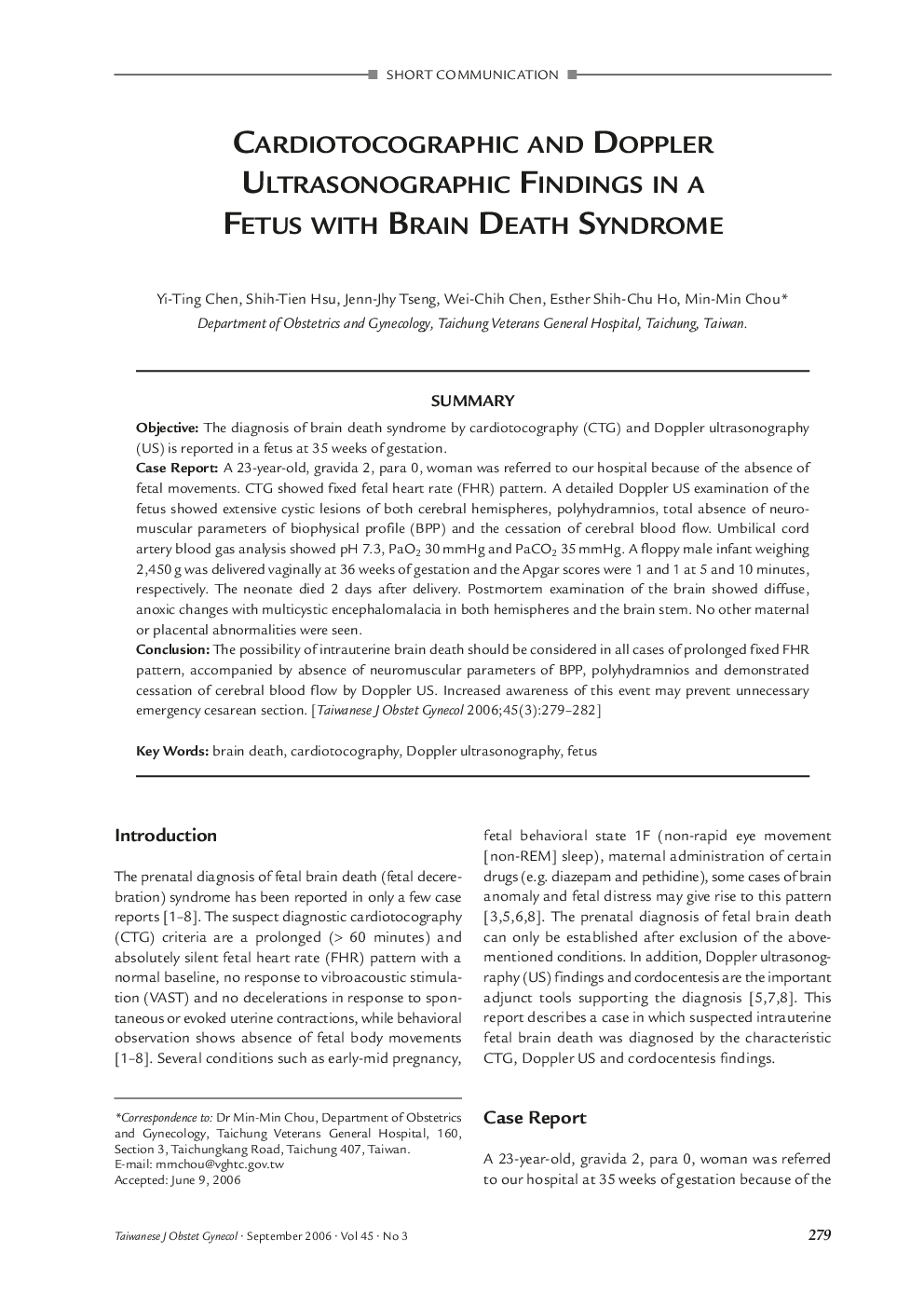| Article ID | Journal | Published Year | Pages | File Type |
|---|---|---|---|---|
| 3976252 | Taiwanese Journal of Obstetrics and Gynecology | 2006 | 4 Pages |
SummaryObjectiveThe diagnosis of brain death syndrome by cardiotocography (CTG) and Doppler ultrasonography (US) is reported in a fetus at 35 weeks of gestation.Case ReportA 23-year-old, gravida 2, para 0, woman was referred to our hospital because of the absence of fetal movements. CTG showed fixed fetal heart rate (FHR) pattern. A detailed Doppler US examination of the fetus showed extensive cystic lesions of both cerebral hemispheres, polyhydramnios, total absence of neuromuscular parameters of biophysical profile (BPP) and the cessation of cerebral blood flow. Umbilical cord artery blood gas analysis showed pH 7.3, PaO2 30 mmHg and PaCO2 35 mmHg. A floppy male infant weighing 2,450 g was delivered vaginally at 36 weeks of gestation and the Apgar scores were 1 and 1 at 5 and 10 minutes, respectively. The neonate died 2 days after delivery. Postmortem examination of the brain showed diffuse, anoxic changes with multicystic encephalomalacia in both hemispheres and the brain stem. No other maternal or placental abnormalities were seen.ConclusionThe possibility of intrauterine brain death should be considered in all cases of prolonged fixed FHR pattern, accompanied by absence of neuromuscular parameters of BPP, polyhydramnios and demonstrated cessation of cerebral blood flow by Doppler US. Increased awareness of this event may prevent unnecessary emergency cesarean section.
